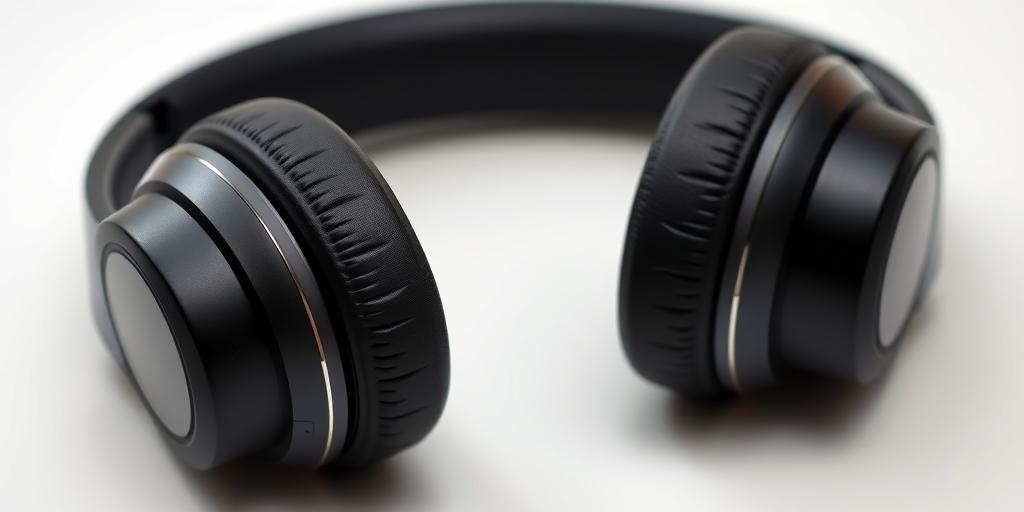Have you ever wondered how noise-canceling headphones achieve that blissful silence? It’s not magic, although it might feel like it! These incredible devices use some seriously clever technology to block out unwanted noise, leaving you to enjoy your music, podcasts, or just some peaceful quiet. Prepare to be amazed as we delve into the science behind this amazing audio technology and uncover how noise-canceling headphones work their magic!
Understanding Noise-Canceling Technology: The Science of Silence
Noise-canceling headphones, also known as active noise-canceling (ANC) headphones, don’t simply block sound with thick padding; they actively counteract it. This is achieved through a sophisticated system that involves microphones, processors, and speakers working in perfect harmony. These components work together to identify, measure, and neutralize unwanted ambient noises. Think of it as a sonic shield, expertly crafted to create your personal oasis of calm.
How Microphones Detect Ambient Noise
The journey to silence begins with tiny microphones strategically placed on the outside of the earcups. These microphones act as highly sensitive ears, constantly listening to the surrounding environment. They pick up unwanted sounds like airplane engine roar, car horns, chatter, or construction noises—the sounds that typically disrupt your listening experience. The data captured by these microphones is the crucial first step in the noise cancellation process.
The Processor’s Role: Analyzing and Inverting Sound Waves
Once the ambient noise is detected by the microphones, the signal is sent to a powerful processor within the headphones. This tiny powerhouse is the brains of the operation. It analyzes the incoming sound waves, identifying their frequency and amplitude. Crucially, the processor then creates an inverse sound wave—a mirror image of the unwanted noise—perfectly out of phase with the original sound.
Neutralizing Noise: The Magic of Destructive Interference
Here’s where the magic happens. The processor sends the inverse sound wave to the internal speakers of the headphones. This inverted wave combines with the original sound wave, resulting in destructive interference. Think of it like two waves colliding; if they’re perfectly opposite, they cancel each other out, effectively neutralizing the unwanted noise. This process occurs in real-time, constantly adapting to changes in the surrounding environment, ensuring continuous noise reduction.
Different Types of Noise-Canceling Headphones
There’s a wide range of noise-canceling headphones available, each with its own strengths and weaknesses. Understanding these differences can help you find the perfect pair for your needs. From over-ear to in-ear options and various price ranges, there’s a noise cancellation marvel tailored to everyone.
Over-Ear Headphones: Superior Noise Blocking
Over-ear headphones, with their larger earcups, generally offer the best noise cancellation. The bigger the earcups, the better the seal around your ears, which helps to block out passive noise, adding to the active noise cancellation. These often provide the most immersive experience, ideal for blocking out the world around you.
In-Ear Headphones: Compact and Convenient
In-ear headphones are more compact and portable, but their noise cancellation is generally less effective than over-ear models. However, advances in technology have led to significant improvements in in-ear ANC headphones, making them a popular choice for those who prioritize convenience without sacrificing noise reduction.
Factors Affecting Noise Cancellation Performance
While noise-canceling headphones are incredibly effective, several factors influence their performance. Understanding these nuances can help you manage your expectations and choose headphones that best suit your needs.
Frequency Range and Sound Profiles
Noise-canceling effectiveness varies across different frequencies. Some headphones excel at blocking low-frequency sounds (like airplane engine rumble), while others might be better at tackling higher frequencies (like human voices). The sound profile of the headphones also impacts the overall experience. Look for headphones that offer clear audio even with noise cancellation engaged.
Seal and Fit: Ensuring Optimal Performance
Proper fit is critical for optimal noise cancellation. A good seal around your ears minimizes the amount of ambient noise that can penetrate the earcups. This is particularly important for over-ear headphones. Look for headphones with adjustable headbands and comfortable earcups for a secure fit.
Beyond the Hype: Are Noise-Canceling Headphones Worth It?
The short answer? Absolutely! Noise-canceling headphones offer a transformative listening experience, allowing you to enjoy your audio content without distraction. Whether you’re traveling, working in a noisy office, or simply seeking some peaceful solitude, investing in a quality pair of noise-canceling headphones is an investment in your well-being. So go ahead and experience the remarkable silence these wonders of technology can deliver!
Ready to silence the world and immerse yourself in sound? Click here to find your perfect pair of noise-canceling headphones today!




